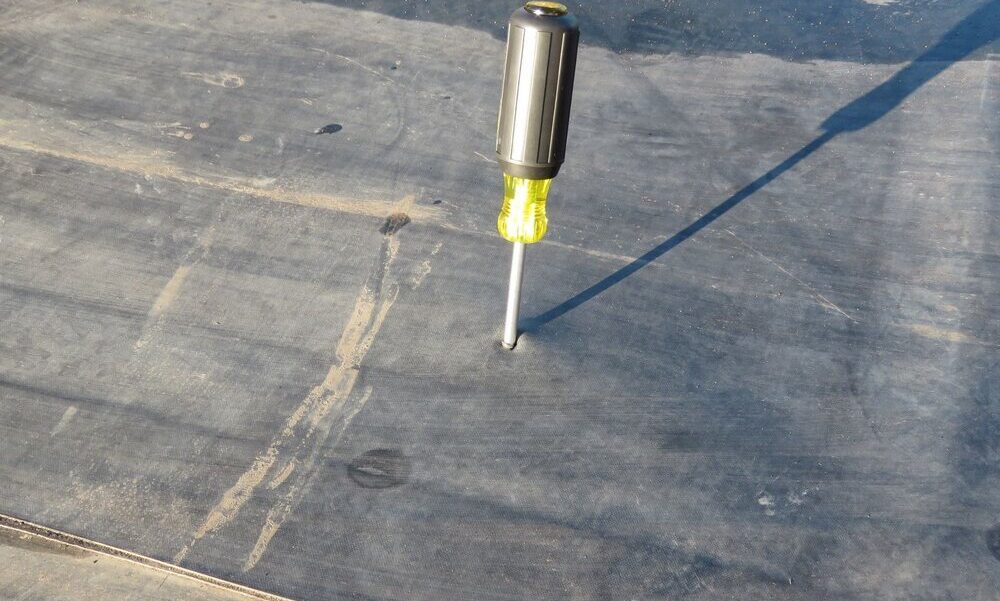
The number one goal of any roof system is simple: Keep water, in all its forms, out of your structure.
Here are the top five reasons it can fail:
1) UV Oxidation and Thermal Load
The sun is the source of all life on Earth, and one of the main sources of roof degradation.
The U.S. Army, which surprisingly spends a ton of its mega-billions maintenance and repair budget on replacing and repairing roofs, authored a study in the 1990s to determine the best roofing system, from low slope systems to shingles.
It determined performance came down to two things: orientation to the sun and surface colour.
In some parts of the southern US, dark coloured roof surface temperatures may routinely exceed 80C degrees due to the absorption of solar radiation.
It’s common knowledge that painting a roof white can reduce that by as much as 30 degrees C — and the interior by as much as seven degrees — but this logical and sensible technique hasn’t been adopted by the commercial roofing industry at large.
UV radiation also has deleterious effects, with cap sheets becoming prone to cracking or other damage. Other systems can be seriously affected by the expansion and contracting caused by the heating and cooling cycle. Roofing materials expand and contract. Mod-bit seams can pull away, allowing water to seep in.
Rubber roofs, which better withstand the UV, are still prone to failure as the glue that keeps the seams together can dry up and fail.
Larger roofs can see the membrane pull away from corners, drains, parapet walls, flashings and other areas and create weak spots that leaks will occur.
2) Standing or Ponding Water
Low-slope roofs are not perfectly flat, as they are constructed with a slight pitch to keep water from pooling.
But if roof pools do for whatever reason, it can cause sagging or deterioration, damage or weaken the roof membrane, and eventually cause water damage in the structure.
3) Neglect
Out of sight, out of mind.
Because roofs are so easy to forget about — until things go wrong — they tend to be missed when it comes to proactive building maintenance and prolongation.
And when you don’t pay attention, bad things will eventually happen.
4) Extreme Inclement Weather
In November of 2020, a winter storm slammed into the Greater Toronto and Hamilton Area, Niagara region, Muskoka region, and the Lake Erie and Lake Ontario shorelines, with wind gusts exceeding 100 km/h and along with torrential downpours. A tornado touched down in northern Georgetown, with the winds there reaching as high as 135 km/h, damaging many roofs in the small Ontario town.
Insurers estimated the damage to be upwards of $87M.
5. Trades and Foot Traffic
Roofers aren’t the only ones who access the roof. Window or skylight sub-contractors, or air conditioning technicians are frequent visitors to the top of buildings.
All it takes is one sausage-fingered contractor to drop his heavy-duty Phillips head screwdriver on your roof and you have a puncture that can cause a big issue.
Constant foot traffic can also compress insulation and wear out roof surfaces.
